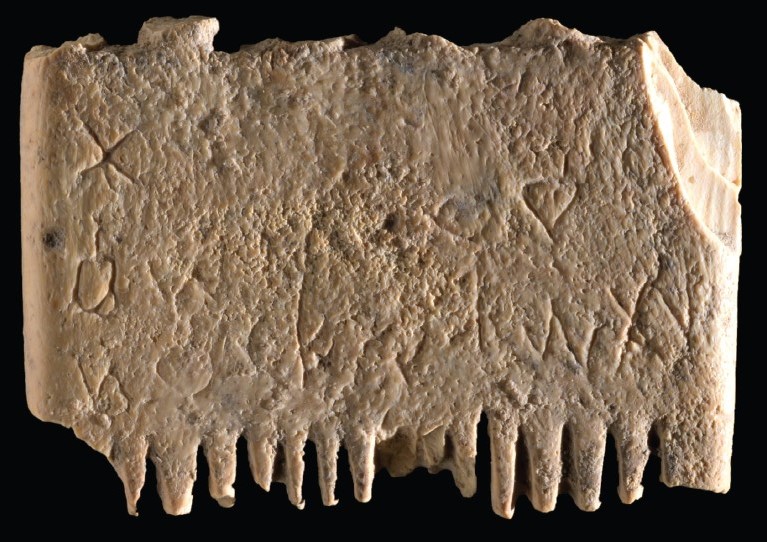Some things never change. Today I learned of the discovery a truly remarkable artifact, an ivory comb excavated at Tel Lachish in Israel. The comb was actually discovered back in 2016, but it was only late last year that the shallow incised inscription on it was noticed and read. The inscription reads: “May this tusk root out the lice of the hai[r and the] beard.” And it seems it did, since the remains of lice were found between the teeth of the comb. The comb and inscription were recently published by Daniel Vainstub et al. with admirable thoroughness in the new open-access periodical, the Jerusalem Journal of Archaeology (from which I shamelessly appropriated the image below; hopefully the authors don’t mind, because I’m doing it to promote their excellent work).

Paleographers are excited about this discovery, because it is one of the earliest inscriptions in the Canaanite alphabet, from which the Phoenician, Hebrew and South Arabian scripts ultimately derive. But I’m excited about this discovery because it means that my experiences as a kindergartener were part of a long, unbroken chain of lice checks going back more than three and a half millennia.
Now for a confession. I did not find out about this comb because I was diligently checking the contents of new journals for interesting materials or because I was researching Bronze Age hygiene. Instead I heard about it while listening to Wait Wait Don’t Tell Me on NPR.
